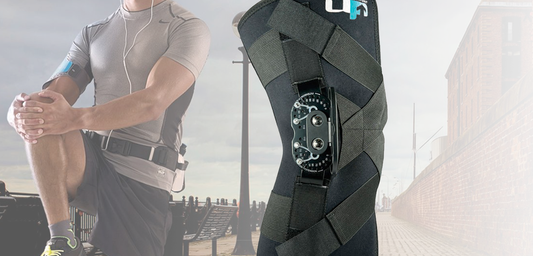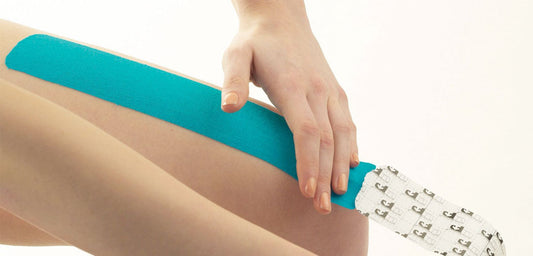
What is Kinesiology Tape?
Share
Kinesiology tape is the colourful tape you might see on athletes, sportsmen and women. Also called Kinesiotape or K-tape, sportsmen and women apply it to muscles and joints for support, to reduce pain, swelling, and improve performance.
Who invented Kinesiology tape?
It was originally developed in the 1970’s by a Japanese chiropractor Dr. Kenzo Kase. His aim was to produce a tape which provided support in the right places, but didn’t limit movement.
High quality tapes such as Ultimate Performance K-tape is strong enough to stay on for days rather than hours. Although very popular, with many athletes swearing by it, we need more research to determine just how effective it is.
What is it used for?
Kinesiology tape is used for:
Treating sports injuries
As part of a full treatment and rehabilitation program it may help reduce pain and swelling, aiding fluid drainage from injured tissues.
Re-training muscles
Kinesiology tape helps re-educate muscles that have lost function or fail to work correctly. For example, when applied to the upper back it helps correct poor posture. Physios think this may be because the sensation of tape on your skin makes you more aware of how you are standing or moving.
Supporting joints and muscles
Depending on how you apply it, Kinesiology tape can help to de-activate muscles, reducing the load on them. When applied around joints it provides compressive support, whilst its elastic properties allow near full range of movement.
Enhancing performance
Studies have also shown that when applied to tired athletes their performance improves! When applied to activate muscles it helps them fire, improving proprioception and muscle tone. For example when applied to the gluteal muscles of runners it encourages them to fire and keep working. As a result running performance improves.
How does kinesiology tape work?
Kinesiology tape is believed to activate or deactivate muscles and aid lymphatic fluid drainage in the body. By mimicking the skin’s elasticity it allows a full range of movement when needed.
When the tape is applied to your body, it recoils slightly. This lifts your skin, helping create a tiny space between your skin and the tissues underneath.
One study showed kinesiology tape applied over the knee increases the space in the joint. Another study showed similar results in the shoulder joint. Increased space in the joint usually means reduced joint pain.
How to apply Kinesiology tape
Follow these steps when applying Kinesio tape:
Clean and dry the area first. Trim excess hair as this prevents good adhesion.

Tear the backing paper in the center of your strip. Cut rounded corners at the ends of each strip. This helps it stick for longer and avoids the ends peeling away.
Apply one end to anchor the strip, letting the end recoil slightly after you take off the backing paper. Avoid touching the adhesive part will make it less sticky.
Try to avoid stretching the last two inches at either end. The ends are just to hold the tape in place. If you stretch the ends, the tape will pull your skin, making it detach sooner.

When you stretch the tape, use the whole length of your thumb across to stretch it evenly.
Important! After you apply the tape, rub the strip vigorously for several seconds to acvitage the glue. Then once applied take it easy for a while because it takes around 20 minutes to reach maximum stickyness.




